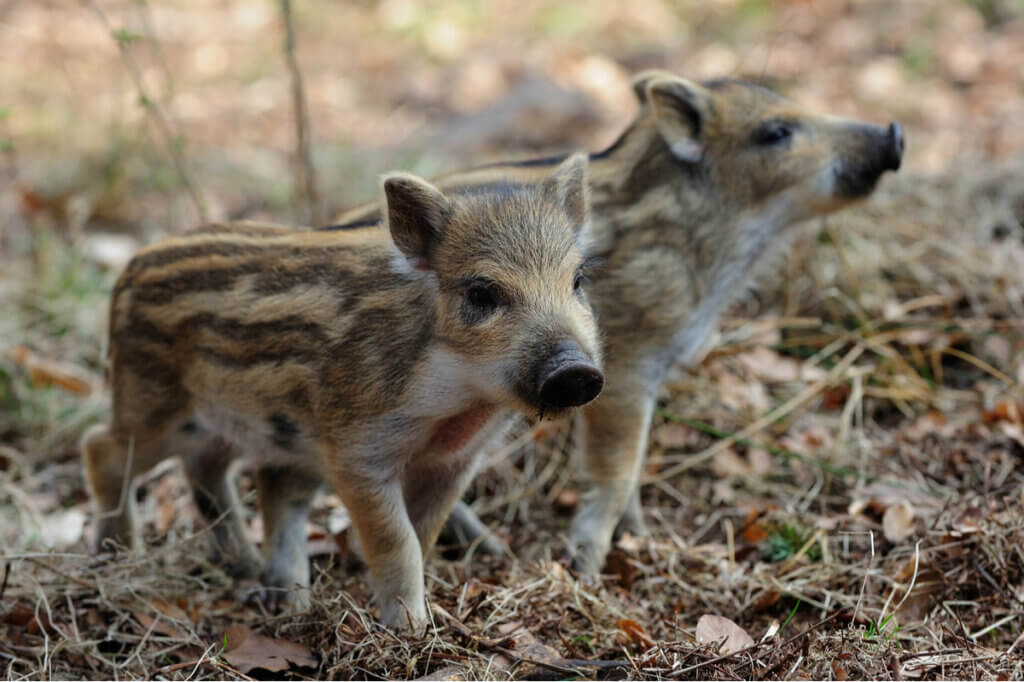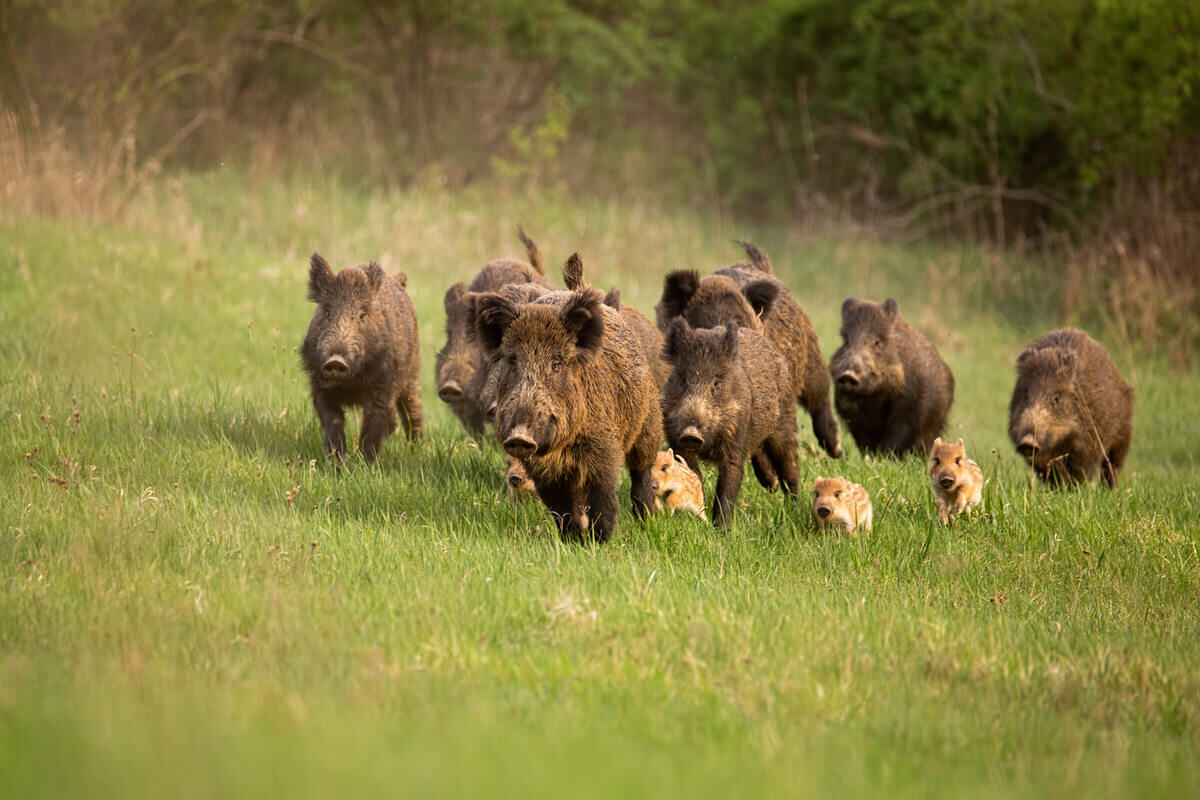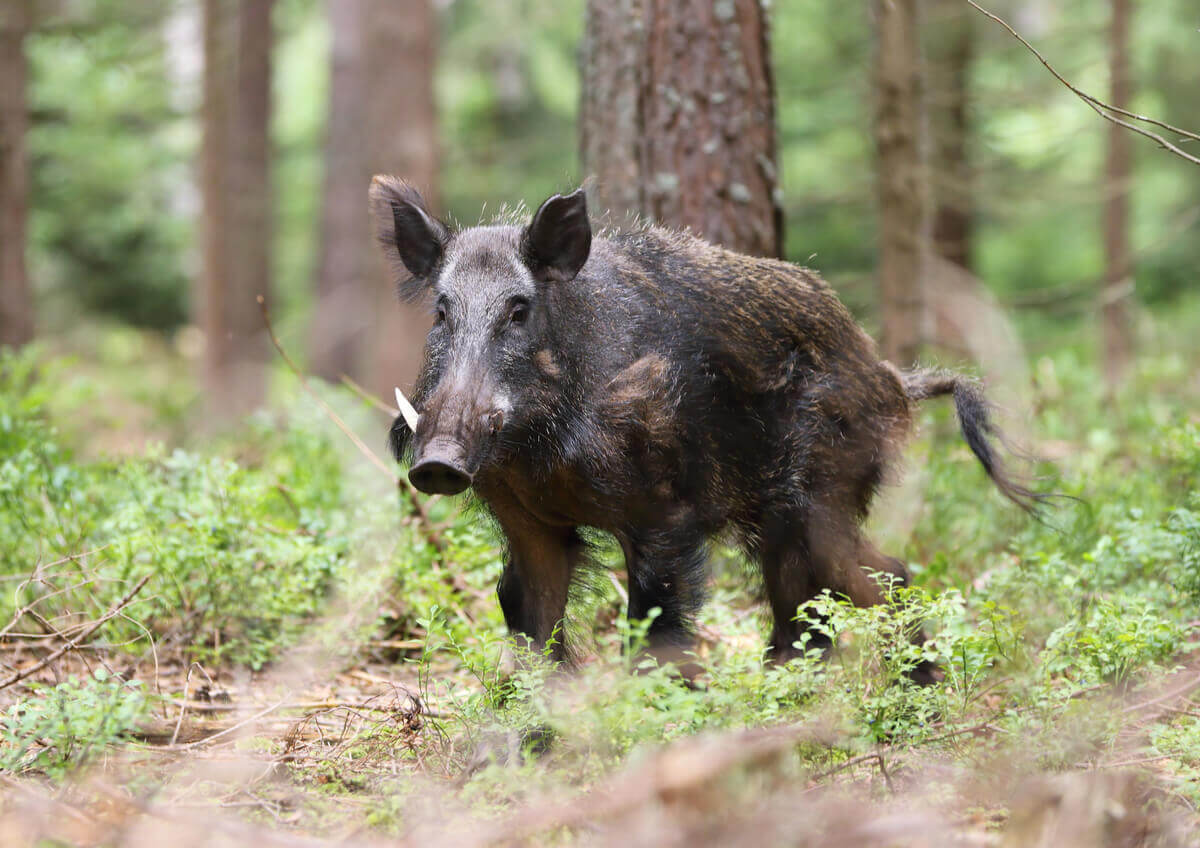The Domestic Breeding of the Wild Boar

Although farm pigs are the result of generations of boar domestication, today, farmers are using the wild boar itself as livestock. Perhaps it’s not a first-choice species, but the domestic breeding of the wild boar has demonstrated a series of benefits that other productive species don’t have at the present time.
On the other hand, we have the thorny issue of wild boar hunting. This activity may be better known, but it definitely has its drawbacks and presents certain ethical dilemmas. So, we want to take this opportunity to show you the peculiarities of the domestic breeding of the wild boar.
The wild boar (Sus scrofa) is one of 16 animal species belonging to the Suidae family. Its original geographical distribution was Eurasia and North Africa but, since then, man has introduced it to both America and Oceania. It’s one of the terrestrial mammals with the greatest geographical dispersion.
The boar in the wild
To understand the domestic breeding of the wild boar in captivity, one must first understand its needs in the wild. Its social behavior and feeding habits are certainly the most relevant when it comes to raising this animal.

Behavior
The wild boar is an animal of nocturnal habits that begins its activity just moments before dusk. In fact, once the sun sets, these animals undertake journeys that can extend up to more than 9 miles. These walks are somewhat shorter for the females, especially if they have their young with them.
In spite of having adapted to moving at night, the vision of the wild boar isn’t very good. Even so, this animal has developed other sensory skills, such as hearing and smell.
Social groups
The wild boar lives in matriarchal groups of up to 20 animals, with two or three mature females and their young. These colonies are structured on the basis of a hierarchy, where there’s always a dominant female. The only males that the group will welcome are immature youth.
Adult males, upon reaching sexual maturity, will have to leave the herd and create their own groups of “singles”.
Diet of the wild boar in the wild
The wild boar is an omnivorous animal that consumes a wide variety of foods. In general, its diet consists of 90% vegetables and the remaining 10% of animal origin. Among the vegetables are roots, bulbs, tubers, fruits, and berries. As for the animal source in their diet, wild boars may eat small rodents, bird eggs, snakes, lizards, worms, and all kinds of larvae.
In addition, this animal makes changes to its diet to adapt to the seasons. In autumn, it takes advantage of fruits such as acorns, chestnuts, or olives. All of these are rich in protein and healthy fats. This especially helps the females to remain in optimal physical condition for the reproductive season.
Peculiarities about the domestic breeding of the wild boar
From a management point of view, wild boars are very rustic animals and adapt easily to the environment around them. Thanks to this, among other things, diseases rarely affect them. This, and the fact that their births don’t require assistance, results in a low incidence of veterinary visits to the farm.
At the same time, wild boars are animals that consume more forage than concentrate. What does this mean? That their feeding is cheaper and that their growth is slower and more natural than in the case of the domestic pig. In addition, it allows them to be raised in marginal areas or areas of inferior quality, where it would be impossible to maintain other livestock species.
Unfortunately, wild boars can also act as important vectors of certain diseases. Because of this, hunting and other unregulated practices are completely discouraged.

Need for regulation
When catching wild boars, ideally they should be taken to a game handling center. There, a veterinarian should carry out the relevant sanitary controls and decide whether the prey is fit for human consumption or not. But this isn’t the norm. Normally, the hunter uses the animal on his own, exposing himself to serious health risks.
Therefore, if the demand for its meat is such, it’s better to continue promoting the domestic breeding of the wild boar. This way, we avoid the health, ethical, and environmental problems of uncontrolled hunting.
All cited sources were thoroughly reviewed by our team to ensure their quality, reliability, currency, and validity. The bibliography of this article was considered reliable and of academic or scientific accuracy.
- Sus scrofa [Internet]. Es.wikipedia.org. [cited 01 September 2020]. Available from: https://es.wikipedia.org/wiki/Sus_scrofa#Periodo_de_celo
- Los orígenes del jabalí [Internet]. 2006 [cited 1 September 2020]. Available from: http://produccion-animal.com.ar/produccion_jabalies/01-origenes_jabali.pdf
- Código Sanitario para los Animales Terrestres: infección por Trichinella spp. [Internet]. 2019 [cited 1 September 2020]. Available from: https://www.oie.int/fileadmin/Home/esp/Health_standards/tahc/current/chapitre_trichinella_spp.pdf
- Forrajes [Internet]. Mapa.gob.es. [cited 1 September 2020]. Available from: https://www.mapa.gob.es/es/agricultura/temas/producciones-agricolas/cultivos-herbaceos/forrajes/
